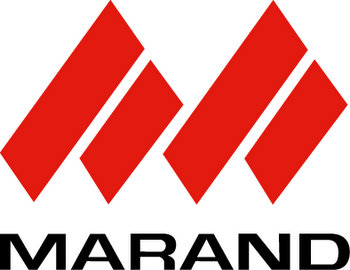24hr World Record #1 2005
AURORA 101 SOLAR CAR RUNS 1255 KM IN 24 HOURS
Its not moonshine, it's a new world record
Saturday 1st January 2005
The Melbourne-based Aurora solar car team, joined by members of the new Southern Aurora solar group set a new world mark on New Year's Day 2005 by covering 1255 km in a continuous 24 hour marathon with the world famous Aurora 101 solar car.
 |
| 9.00 PM 1 January 2005, 24 hours done |
This is the first time that a solar car has accomplished powering through night and day in a non stop demonstration of reliability and energy efficiency. There were of course short stops for driver changes approximately every three hours.
The Aurora 101 solar car has enjoyed an impressive international year, having raced in two pre-Olympic events in Greece in May, in Japan's biggest solar car race in July and participating in the spectacular Challenge Bibendum event in Shanghai in October.
Wishing for moonshine is futile. Although a near full moon was expected, it rose after midnight and was obscured by scudding cloud and a major weather change which ensured a bleak New Year's Day. So the night session was an exercise in battery power, carefully meted out to ensure that enough would be left to enable solar energy to take over in the morning.
 |
| Driver change for Aurora 101 in the middle of the night |
The solar car specification was identical to the way it was in running second at the 2003 World Solar Challenge in October 2003. The WSC regulations allow for only 5 kilowatt hours of battery capacity at the start thereafter all energy to be derived from the sun. Observer and scrutineer for the 24 hour event was Viv Baddeley, himself an expert in solar cars and an experienced official from the John Hoerner-directed Australian Sunrace. Aurora's plan was to use three drivers on approximate 3 hours rotation. Derrick Rodgers and Damien McArthur from Hamilton, both with race experience in setting race lap records in Suzuka Japan were joined by Aurora's most experienced driver, Tony Vriens. Tony has covered over 17,000 km in solar cars.
 |
| Derrick Rodgers, driver |
 |
| Tony Vriens straps in for a night drive |
Altogether, 14 Aurora members prepared for the marathon. Ford, the long standing Foundation Sponsor of Aurora made available their high speed track for the event, this being the only time until next March that it was free of other test cars. The track length is 4.8005 km. The team was to be totally self sufficient for the 24 hours so came equipped with an electricity generator, portable toilet, BBQ, tents, water supply and fuel for the support car.
 |
| Setting up on New Year's Eve |
At precisely 9.00 PM on 31 December 2004, Derrick Rodgers moved off the start line and settled the cruise control at 60 km/h. It was past sunset but still light, and track visibility was adequate. But as the black of night took over, spotting the small marker lights placed around the track became more and more difficult. Finally, a support car was used to lead the way and the hazard flashers of the Aurora 101 solar car were permanently activated.
A small celebration took place at the first driver change because it took place at midnight. We could see the flicker of Melbourne's fireworks display on the horizon as Damien McArthur rolled off into 2005.
 |
| A minute past midnight - the start of 2005 |
Individuals took opportunity for some sleep waking in time for the next driver change. Tom Baker and Peter Pudney were the ones with most stamina. They were monitoring progress on their strategy computers, recording energy usage every lap as the telemetry signals came into range. It was getting colder, and those standing were wrapped in blankets or sleeping bags.
 |
| Tom Baker - Cold and up all night |
As morning dawned the hopes of completing 24 hours were in disarray. There was solid cloud everywhere, so thick that it was impossible to see where the sun might rise. Peter Pudney figured we would run out of energy soon, and David Fewchuk was prepared to abandon the record attempt and blame it on the weather. The solar car speed was reduced to just 30 km/h, the speed at which it needed a mere 140 watts to keep going. The solar panel produced just that and as the light brightened started to improve. Four hundred watts would be sufficient for 60 km/h, 600 watts for 70 km/h. The crawl was maintained for 5 hours and slowly the batteries were storing energy. At 12.20 PM the first shadow from sunlight was seen. Shortly afterwards, the sun blazed through a hole in the clouds and the solar panel jumped to life, producing over 2000 watts for a period of minutes. It now looked like 24 hours of continuous running might be achieved providing the car's reliability was sustained.
Bob and Glenda Cadden turned on a great lunch. It was appreciated by the whole team and also by that time a horde of friendly flies. Just like anywhere in Australia! Have BBQ, have interested flies. Only 8 hours to go. At least the speeds were improving.
A slowly deflating rear tyre provided the only unscheduled stop. It was quickly changed. Then it was back to book reading, sleeping and discussing the next design of solar car.
Derrick had the final driving session and struggled a bit to hear some of the instructions on the 2 way radio. He didn't miss the request to speed up to 75 km/h which he maintained until 9.00 PM. A total of 261 laps and 2.1 km had been covered, a distance of 1255 km. An average speed of 52.3km/h was maintained. The next day was perfectly sunny.
 |
| Damien McArthur advises Doug Williams on a trial lap. The Hamilton boys |
This was the first time ever that a solar car had run continuously for 24 hours. A new day distance record was established. A small step in demonstrating the eventual practicality of solar powered cars has been taken. A great finish to Aurora's 2 year "Beaming" program and a great start to its next two year program to be named "Stretchin' Oil".
Aurora has achieved a number of long day distance marks as follows:
24 January 2000 Sydney to Melbourne 877 km.
October 2001 Day 4 of WSC 757 km
17 January 2002 Longest distance on solar power 780 km
October 2003 Day 4 of WSC 758 km
1 January 2005 24 Hour Blitz 1255 km
The graphical representation of the 24 hour run is shown below:
 |




